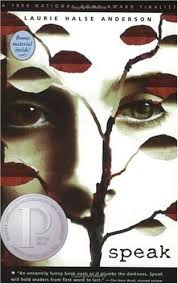Race meets the Malaysian church
[Context: This is an edited version of a piece in which I interact fairly extensively with my friend Wai Nyan’s reflections on race-based politics. In it I attempt to modify some aspects and build upon his post and in doing so hope to encourage all of us to reflect more on the subject. This post makes no pretence at being definitive or exhaustive, not that I could do that anyway. Wai Nyan has seen an earlier draft, and encouraged me to put it online. Blame him. :-p]
My friend Wai Nyan asks the question, ‘Is race-based politics dying?’ and offers a few brief reflections. I suspect that his reflections are shaped by a desire to respond to those “who say that race-based politics should be eliminated but in the very same sentence, mock the Malays...” and those of similar attitudes. Therefore, his intended audience and purpose is quite different from mine; where he sought generally to correct, I was looking for further elucidation. That needs to be taken into account: writing a disciplinary report to the parents of the naughty kid in your class is obviously different from writing an extended essay for your college professor! So I was looking for some nuance in a post that was not necessarily meant to be read that way.
WN’s post reminded me of a D.A Carson piece where he reflects on racism with reference to the church in particular, and I managed to track it down and reread it. Five Steps for Reconciliation on Sunday at 11 a.m, adapted from chapter 4 of his book Love in Hard Places, represents Carson at his best. He suggests five things we need to keep in mind:
On history and terminology
I want to use Carson’s suggestions as a jumping-off point. I think that first of all, to "know the history of the problem" is to know a little about the word 'race' itself. When we use the word, we normally mean a particular grouping of people based on certain physical characteristics, shared culture and perhaps also area of geographical origin. However, sometimes people go beyond that, and link these inherited physical characteristics to inherited moral, intellectual or behavourial qualities. This is certainly true historically: the history of colonialism reveals that frequent distinctions between the "civilized" and the "barbarians" were often made with these assumptions in mind. Antisemitism is another obvious example. I’m no expert, but as far as I can tell, no respectable geneticist today will tell you that there is an inherent link between “race” and genes. That sounds weird to our ears at first – surely Tiger Woods, Roger Federer and Lin Dan are completely different? It is true that their body shapes, hair and so on are different, and that this is based genetically. Nevertheless, it is only a very small part of us. The mix of melanin, the substance that controls our skin colour, is tiny, and everyone has the same genes that control skin colour! Caucasians could in theory be as dark-skinned as Africans. (I remember first reading about this as a kid in the Bookworm series from Singapore and being very tickled about it). It turns out that a tall person and a short person is probably more different genetically than a Malay and Chinese of equal height.
Does that mean 'race' doesn’t exist? No, we can still talk of race, but we just can’t ground it in purely biological terms. Rather, we use it as a convenient way to classify complex groupings of people with shared physical appearances, cultures, ancestry et al., and all this is bound up with questions of religion and geographical location and so on. It can be very difficult, even impossible to clarify where the exact boundaries are. Where do we draw the line where somebody belongs to a certain race and not the other (or when one qualifies as “mixed”)? The recent blooper where the Chief Minister of Perak mistakenly referred to Sikhs as Bengalis neatly illustrates this, and also shows the very real hurt feelings that can arise.
Generally, we do need to think more about what we mean by 'race', and particularly because it is relevant to, if only in a tiny part, "knowing the history of the problem" in Malaysia. In 1970, Tun Dr. Mahathir, the strongman of Malaysian politics, wrote The Malay Dilemma, where he, among other things, lamented the racial inferiority of the Malays and explicitly linked it with defective genes. This is just not a tenable position. There were also places in the book where he framed the discussion in terms of competition with other races. I don’t know if Dr. M would still defend those views in 2008, or how influential the book continues to be today, but there was no doubt that his book had a significant impact on the psyche of the Malays then and has helped frame the discussion not in altogether helpful ways.
Of course, Dr. M was also building on racial stereotypes inherited from our colonial masters and earlier intellectuals who depicted the Malays as an indolent people. The colonial administrators also played the divide-and-rule game and helped create a racially segregated society and also boosted a collective identity among various people groupings. It is also helpful to remember that as Malaya, which was already populated by various peoples, began to move towards independence, communal groupings were formed – UMNO, MCA etc. – and when they banded together as the “Alliance”, the predecessor of today’s BN, they faced the paradox of appealing to communalist sentiments to pander to their various bases while at the same time trying to present a united front, downplaying perceived threats from the other communities.
Now this is only a very small representation of the various complicated issues at hand. I am actually very reluctant to comment at length because I am quite aware of my own ignorance of these issues. All I really want to show is that it’s really important to try to understand why the situation as it exists today comes about. It’s also why I want to quibble slightly with some of the ways WN frames his discussion. I’m not sure, for instance, if it follows that identifying simply with the phrase “I am Malaysian” leads to CNY, Deepavali or Hari Raya being discarded or our various ancestral histories etc. being disposed of (if that was even possible). I get that this is a rhetorical strategy on his part to show two extreme positions – one where we merely emphasise our lot with no care for others and one where there is a flattening out of diversity, before he goes on to chart a better third way: love. I agree with the rejection of these two positions and the third way, and hopefully this will be evident later on this post.
But I think how we speak of these positions are important. Here, I would prefer to talk in terms of cultures or ethnicities – diverse cultures do exist, and they can all exist under the rubric: “I am Malaysian”. This might sound like mere semantics, but I don’t think so. I feel that we just cannot be loose with our talk if we are to challenge erroneous assumptions about race. Malaysia is a place of cultural diversity, and we can be thankful for that. And we do need to talk about problems of race and racism, as WN acknowledges. But WN implicitly ties CNY, Deepavali and Hari Raya with notions of racial essence, by suggesting that a singular “Malaysian race” means that these celebrations become a thing of the past. But Deepavali and Hari Raya are religious festivals which are celebrated by all kinds of people groups all over the world! True, the socio-cultural conditions in Malaysia are such that to be Malay is to be Muslim, and to be Indian is (mostly) to be Hindu, but this is not a link that is set in stone the way, say, being right or left-handed is. So I would have preferred him to use different terminology or examples.
Carson suggests that we also ought to "recognise our mutual culpability", by which he means that we need to acknowledge that racism often comes from both sides of the divide. WN rightly draws our attention to our hidden racism here; we, whatever colour we are, alll too easily often cast ourselves as collective victims. Yet we all have been guilty of perpetuating the problem at some point. Although he is addressing the black/white divide in America, Carson’s words have applicability cross-culturally and are worth quoting at length here:
Continued (part 2)
† Expand post
My friend Wai Nyan asks the question, ‘Is race-based politics dying?’ and offers a few brief reflections. I suspect that his reflections are shaped by a desire to respond to those “who say that race-based politics should be eliminated but in the very same sentence, mock the Malays...” and those of similar attitudes. Therefore, his intended audience and purpose is quite different from mine; where he sought generally to correct, I was looking for further elucidation. That needs to be taken into account: writing a disciplinary report to the parents of the naughty kid in your class is obviously different from writing an extended essay for your college professor! So I was looking for some nuance in a post that was not necessarily meant to be read that way.
WN’s post reminded me of a D.A Carson piece where he reflects on racism with reference to the church in particular, and I managed to track it down and reread it. Five Steps for Reconciliation on Sunday at 11 a.m, adapted from chapter 4 of his book Love in Hard Places, represents Carson at his best. He suggests five things we need to keep in mind:
- Know the history of the problem
- Recognise our mutual culpability
- Consider your church’s neighbourhood
- Consider the real gospel tensions
- Think biblically and theologically
On history and terminology
I want to use Carson’s suggestions as a jumping-off point. I think that first of all, to "know the history of the problem" is to know a little about the word 'race' itself. When we use the word, we normally mean a particular grouping of people based on certain physical characteristics, shared culture and perhaps also area of geographical origin. However, sometimes people go beyond that, and link these inherited physical characteristics to inherited moral, intellectual or behavourial qualities. This is certainly true historically: the history of colonialism reveals that frequent distinctions between the "civilized" and the "barbarians" were often made with these assumptions in mind. Antisemitism is another obvious example. I’m no expert, but as far as I can tell, no respectable geneticist today will tell you that there is an inherent link between “race” and genes. That sounds weird to our ears at first – surely Tiger Woods, Roger Federer and Lin Dan are completely different? It is true that their body shapes, hair and so on are different, and that this is based genetically. Nevertheless, it is only a very small part of us. The mix of melanin, the substance that controls our skin colour, is tiny, and everyone has the same genes that control skin colour! Caucasians could in theory be as dark-skinned as Africans. (I remember first reading about this as a kid in the Bookworm series from Singapore and being very tickled about it). It turns out that a tall person and a short person is probably more different genetically than a Malay and Chinese of equal height.
Does that mean 'race' doesn’t exist? No, we can still talk of race, but we just can’t ground it in purely biological terms. Rather, we use it as a convenient way to classify complex groupings of people with shared physical appearances, cultures, ancestry et al., and all this is bound up with questions of religion and geographical location and so on. It can be very difficult, even impossible to clarify where the exact boundaries are. Where do we draw the line where somebody belongs to a certain race and not the other (or when one qualifies as “mixed”)? The recent blooper where the Chief Minister of Perak mistakenly referred to Sikhs as Bengalis neatly illustrates this, and also shows the very real hurt feelings that can arise.
Generally, we do need to think more about what we mean by 'race', and particularly because it is relevant to, if only in a tiny part, "knowing the history of the problem" in Malaysia. In 1970, Tun Dr. Mahathir, the strongman of Malaysian politics, wrote The Malay Dilemma, where he, among other things, lamented the racial inferiority of the Malays and explicitly linked it with defective genes. This is just not a tenable position. There were also places in the book where he framed the discussion in terms of competition with other races. I don’t know if Dr. M would still defend those views in 2008, or how influential the book continues to be today, but there was no doubt that his book had a significant impact on the psyche of the Malays then and has helped frame the discussion not in altogether helpful ways.
Of course, Dr. M was also building on racial stereotypes inherited from our colonial masters and earlier intellectuals who depicted the Malays as an indolent people. The colonial administrators also played the divide-and-rule game and helped create a racially segregated society and also boosted a collective identity among various people groupings. It is also helpful to remember that as Malaya, which was already populated by various peoples, began to move towards independence, communal groupings were formed – UMNO, MCA etc. – and when they banded together as the “Alliance”, the predecessor of today’s BN, they faced the paradox of appealing to communalist sentiments to pander to their various bases while at the same time trying to present a united front, downplaying perceived threats from the other communities.
Now this is only a very small representation of the various complicated issues at hand. I am actually very reluctant to comment at length because I am quite aware of my own ignorance of these issues. All I really want to show is that it’s really important to try to understand why the situation as it exists today comes about. It’s also why I want to quibble slightly with some of the ways WN frames his discussion. I’m not sure, for instance, if it follows that identifying simply with the phrase “I am Malaysian” leads to CNY, Deepavali or Hari Raya being discarded or our various ancestral histories etc. being disposed of (if that was even possible). I get that this is a rhetorical strategy on his part to show two extreme positions – one where we merely emphasise our lot with no care for others and one where there is a flattening out of diversity, before he goes on to chart a better third way: love. I agree with the rejection of these two positions and the third way, and hopefully this will be evident later on this post.
But I think how we speak of these positions are important. Here, I would prefer to talk in terms of cultures or ethnicities – diverse cultures do exist, and they can all exist under the rubric: “I am Malaysian”. This might sound like mere semantics, but I don’t think so. I feel that we just cannot be loose with our talk if we are to challenge erroneous assumptions about race. Malaysia is a place of cultural diversity, and we can be thankful for that. And we do need to talk about problems of race and racism, as WN acknowledges. But WN implicitly ties CNY, Deepavali and Hari Raya with notions of racial essence, by suggesting that a singular “Malaysian race” means that these celebrations become a thing of the past. But Deepavali and Hari Raya are religious festivals which are celebrated by all kinds of people groups all over the world! True, the socio-cultural conditions in Malaysia are such that to be Malay is to be Muslim, and to be Indian is (mostly) to be Hindu, but this is not a link that is set in stone the way, say, being right or left-handed is. So I would have preferred him to use different terminology or examples.
Carson suggests that we also ought to "recognise our mutual culpability", by which he means that we need to acknowledge that racism often comes from both sides of the divide. WN rightly draws our attention to our hidden racism here; we, whatever colour we are, alll too easily often cast ourselves as collective victims. Yet we all have been guilty of perpetuating the problem at some point. Although he is addressing the black/white divide in America, Carson’s words have applicability cross-culturally and are worth quoting at length here:
" True, slavery is the sin of the powerful, not the weak; and very often racism follows the same pattern. But if racism is defined in terms of exclusion, then racism occurs wherever anyone is dismissed or disowned or demeaned or stereotyped for no other reason than his or her race or ethnicity. Doubtless many white racists think that African-Americans are intrinsically prone to violence, not too bright, and more of the same; but many an African-American finds it hard to imagine that "Whitey" can ever be trusted or should ever be given the benefit of the doubt. It may be useful to draw an analogy. If materialism is the exclusive sin of the rich, then only rich people can be materialistic. But if materialism is the passionate love of material goods, such that God himself is deposed, then poor people may be as horribly materialistic as the rich."
Continued (part 2)
† Expand post
Labels: commentary, culture, Malaysia, personal reflections, politics, race












Post a Comment
<< Home